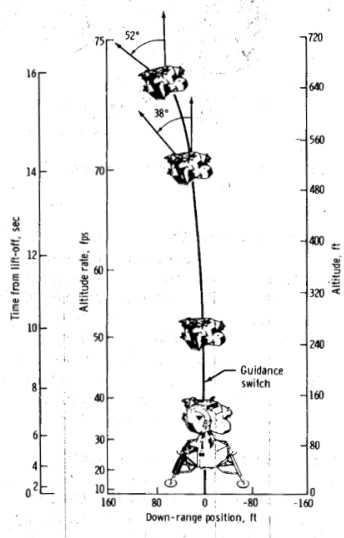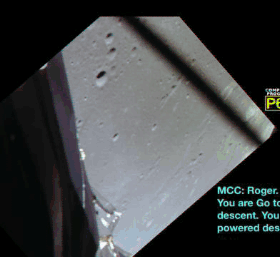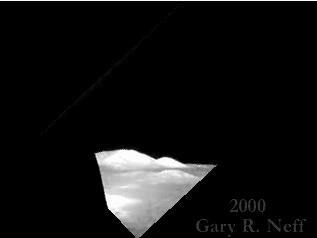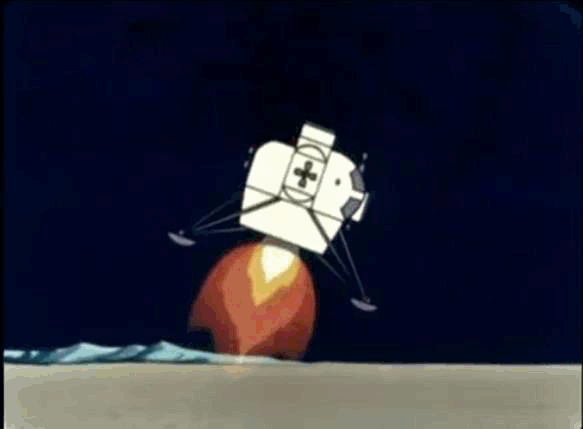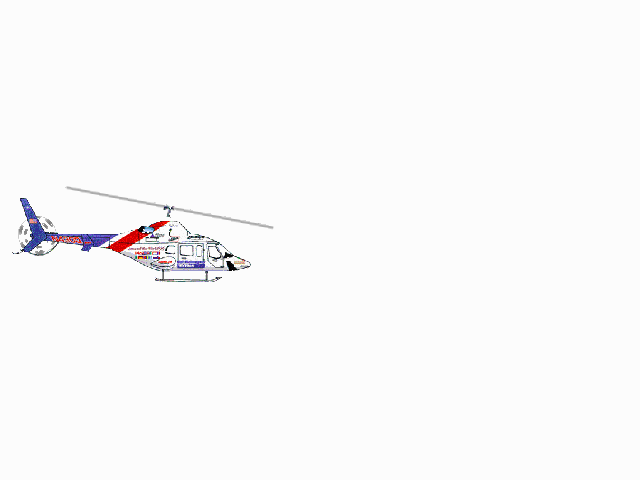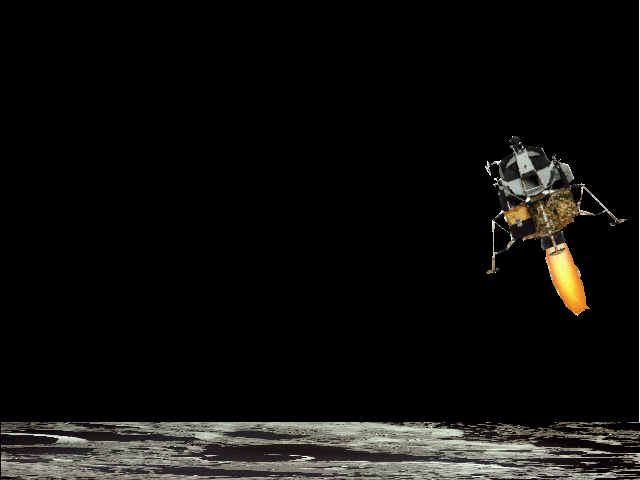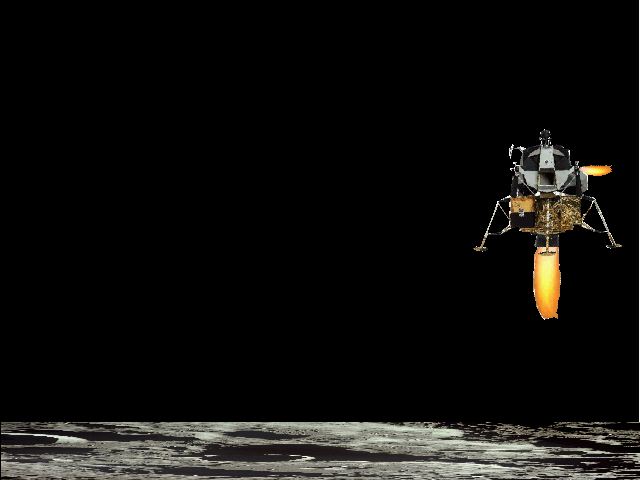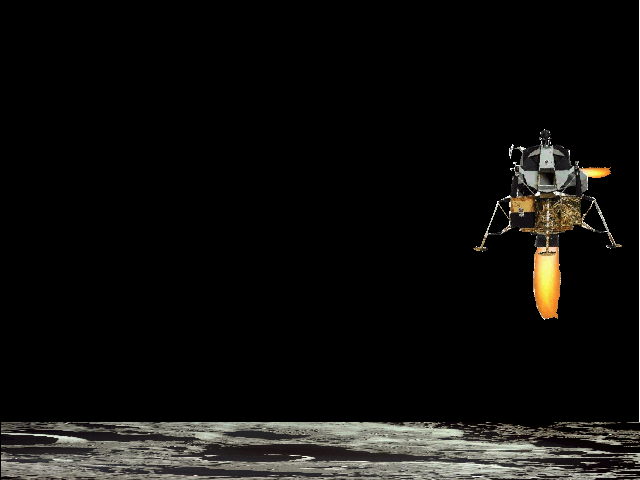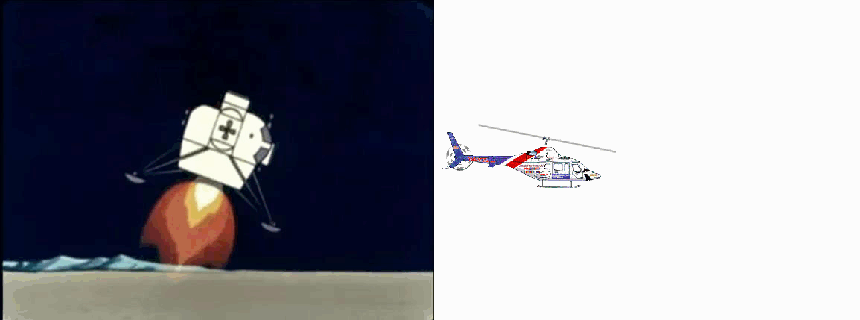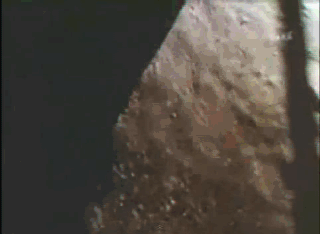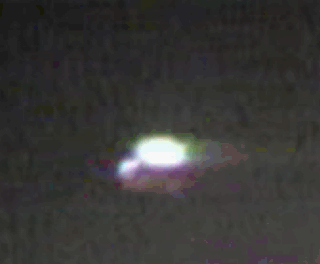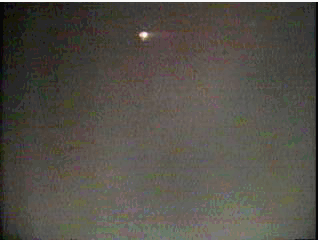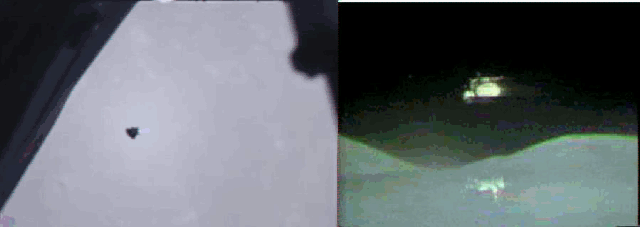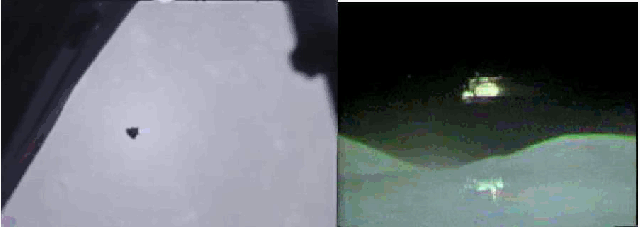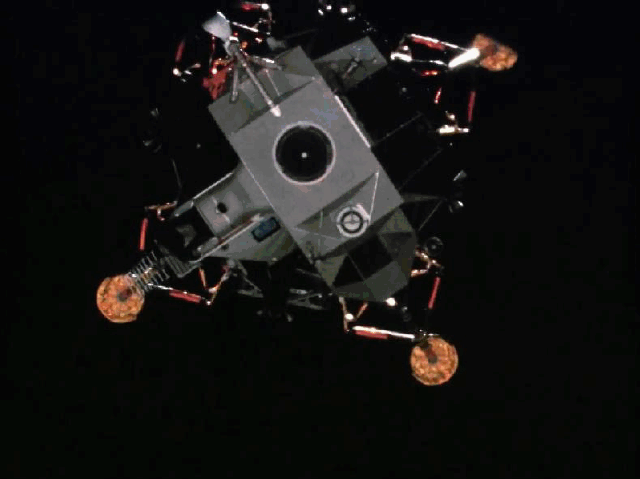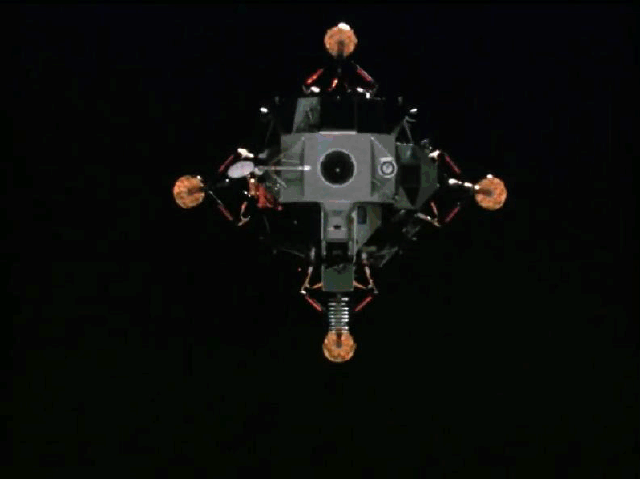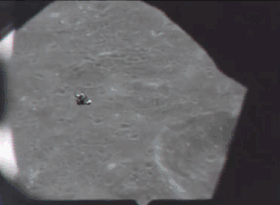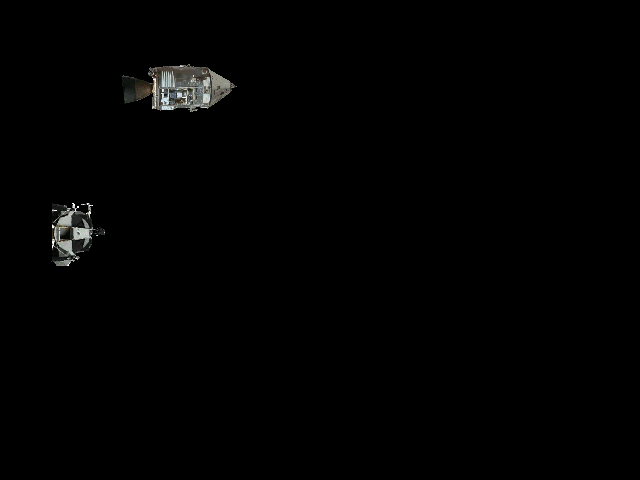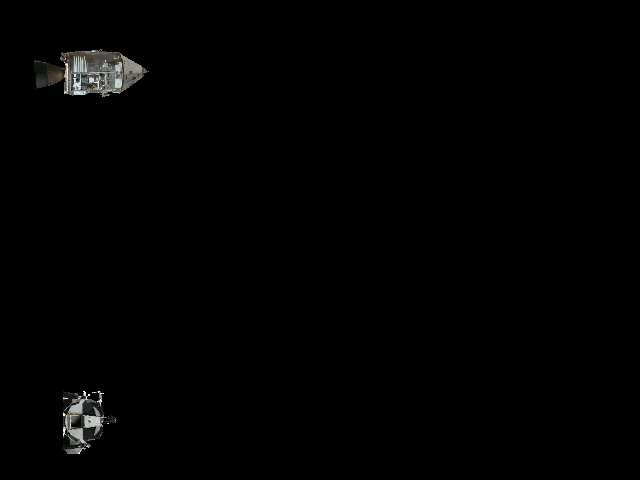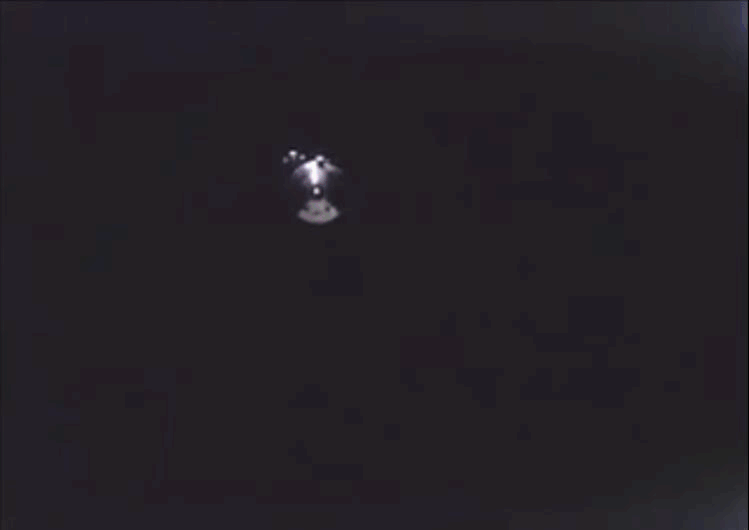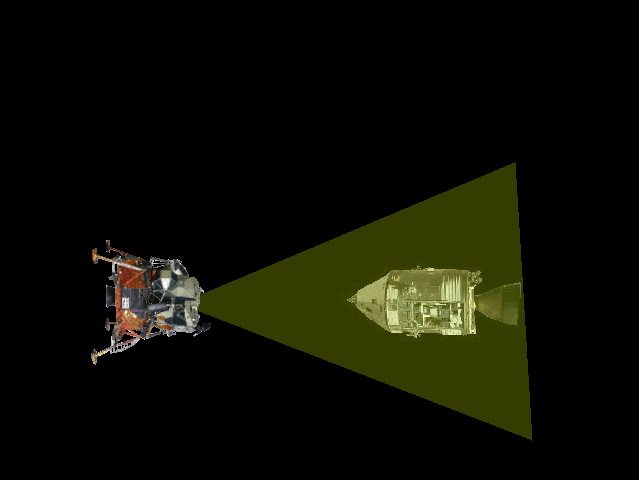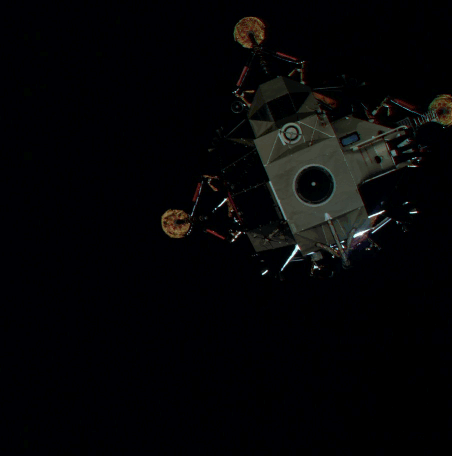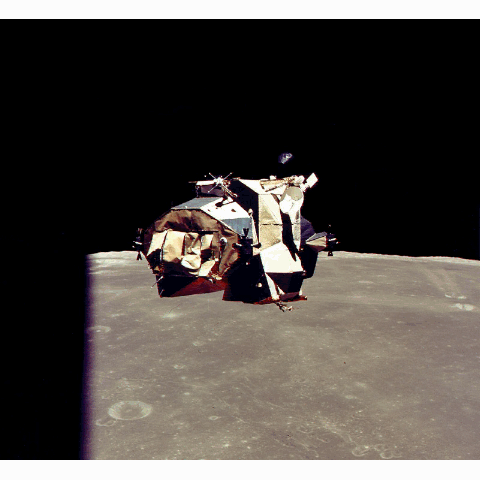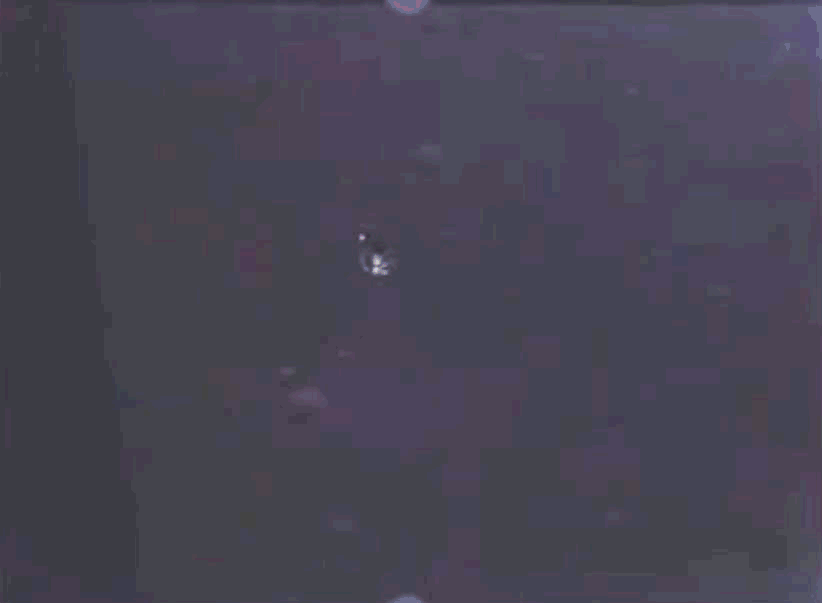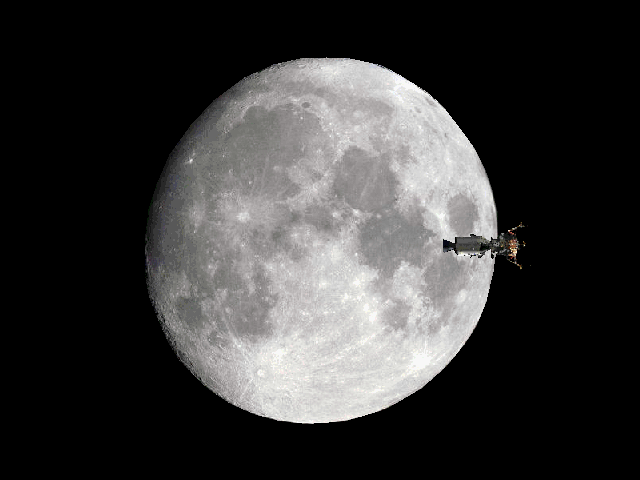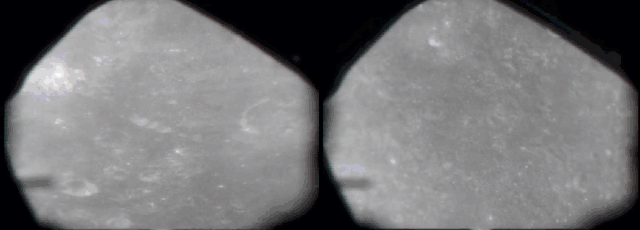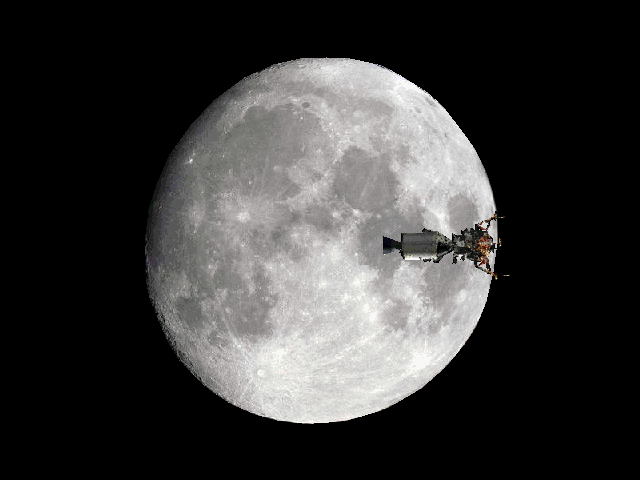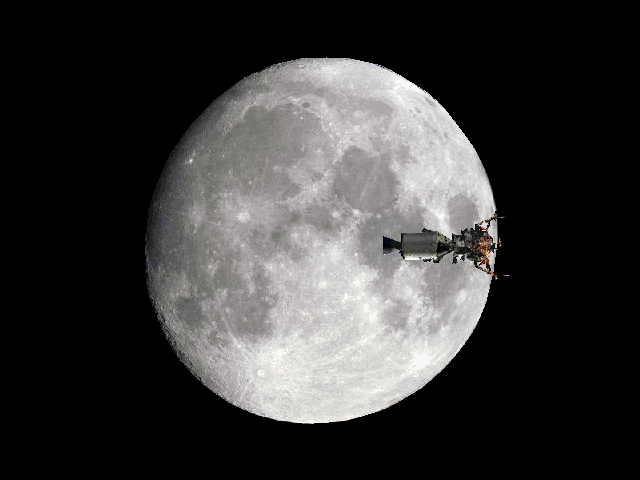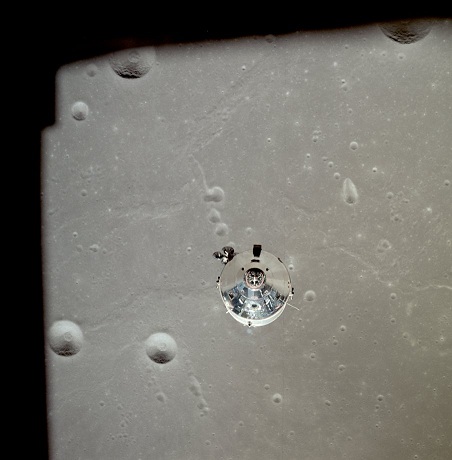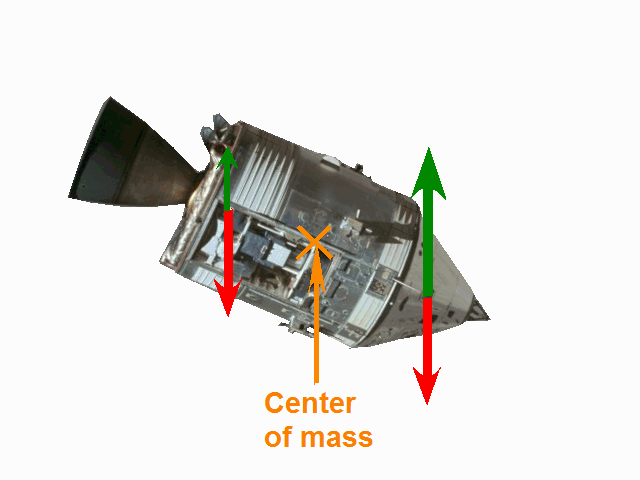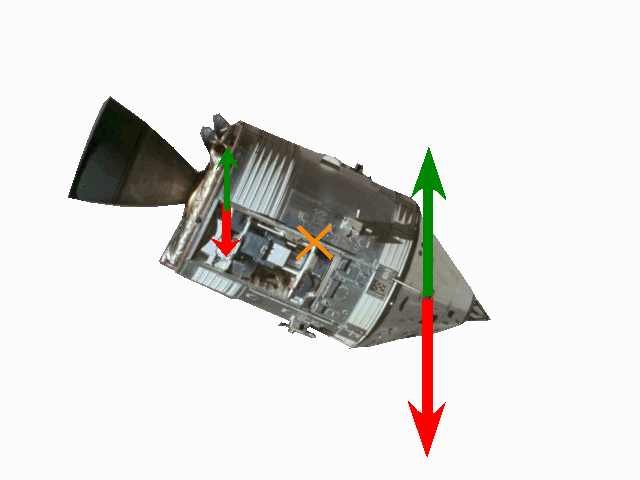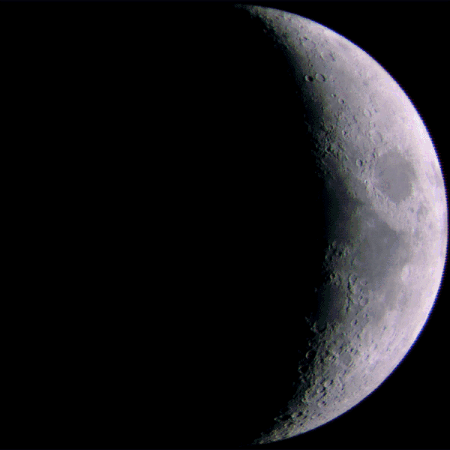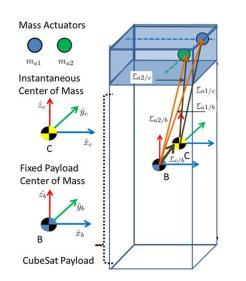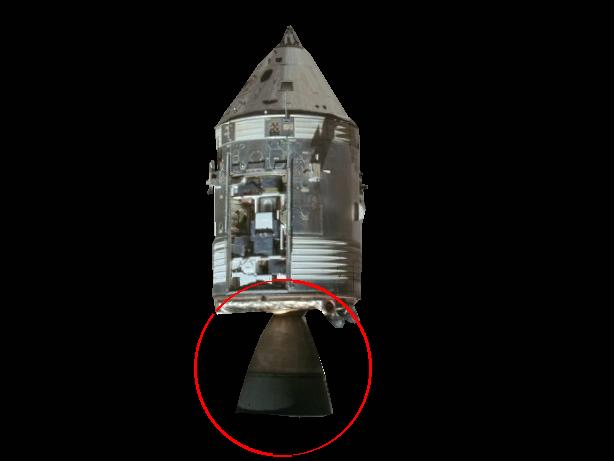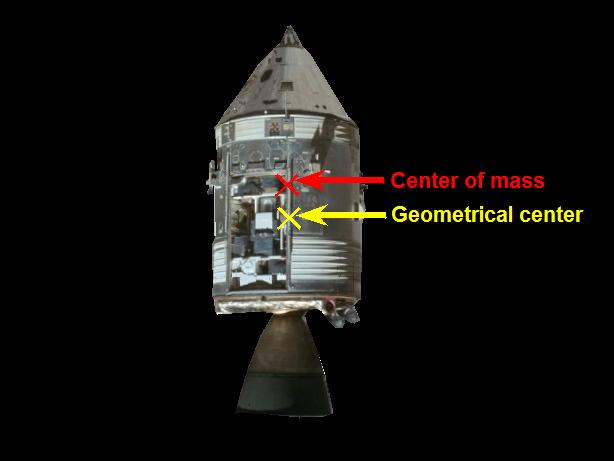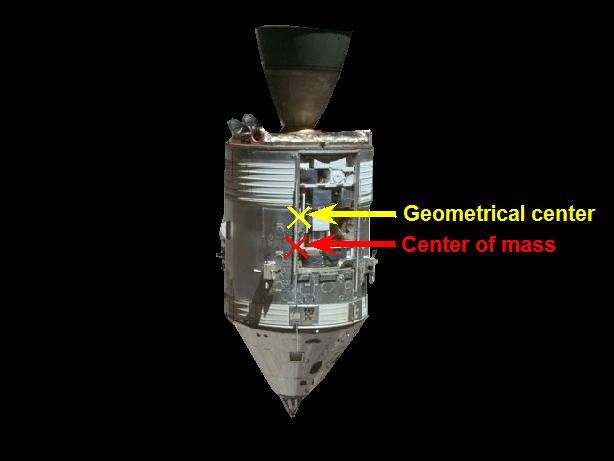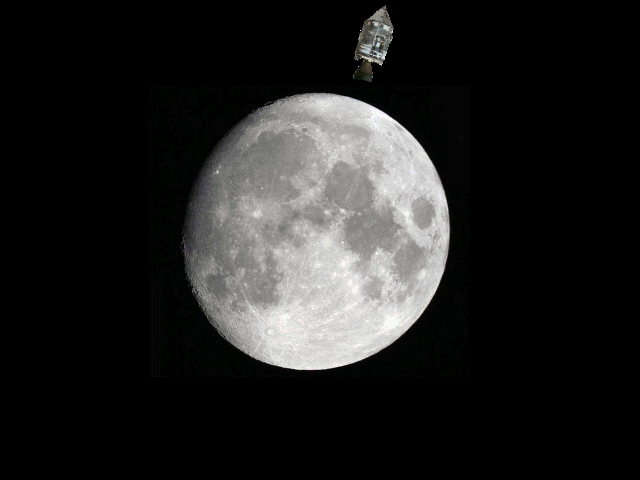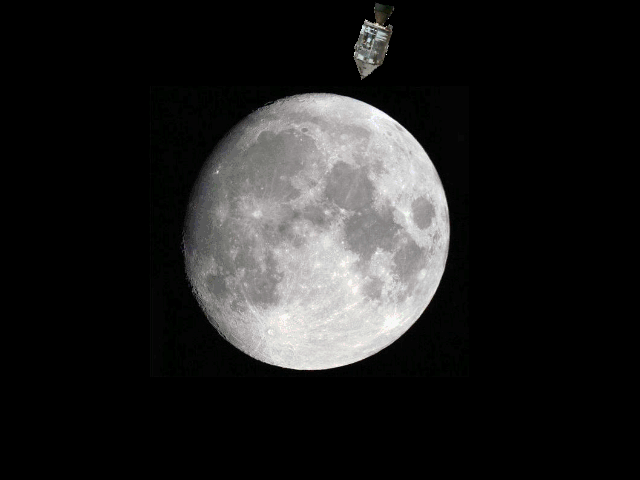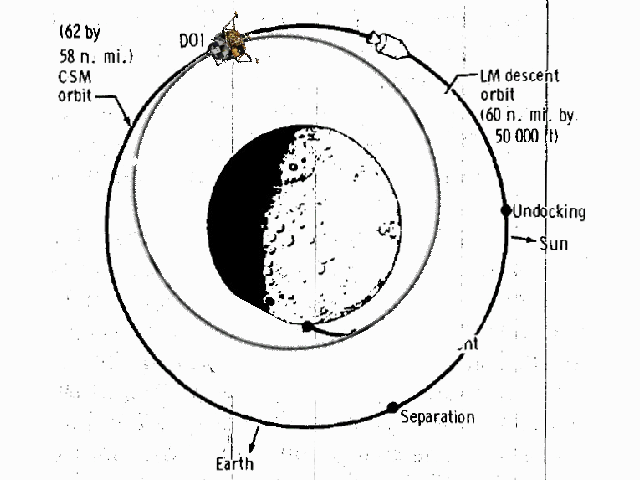
In order to reach an orbit closer to the moon, from which the powered descent must start (the orbit of the command module is too far from the moon to start the powered descent from it), the lunar module must take a descent orbit toward this closer orbit; this descent orbit is called "Hohmann transfer" (from the name of the German scientist who imagined it), and it is an orbit which, instead of being at a constant distance from the lunar surface, is at a varying distance, and allows to go between two orbits.
This maneuver, called "DOI", is described in a document of NASA (nasa-tnd-6846pt.1.pdf).
On the point of the orbit of the command module where this descent orbit starts from, the orbital speed of this descent orbit is a little smaller than the orbital speed of the command module; so, in order to put itself on this descent orbit, the lunar module must reduce its speed of the difference between the orbital speed of the command module and the orbital speed of the descent orbit on the point of contact with the orbit of the command module; the NASA document describes this difference as being equal to around 75 feet/s, and what I have myself calculated is close to it.
After the lunar module has used its main engine to reduce its speed of this value, it starts to descend on the transfer orbit with its engine off; it naturally glides on this orbit.
After the lunar module has reached the closer orbit, after having travelled on half this orbit, it starts using this engine again to perform the powered descent allowing it to land on the moon.
At the start of the descent orbit, the lunar module is moving slower than the command module, but, along the descent orbit, it speed is going to progressively increase; however, when it will start to move faster than the command module, it will be very far from it, and out of view from this one.
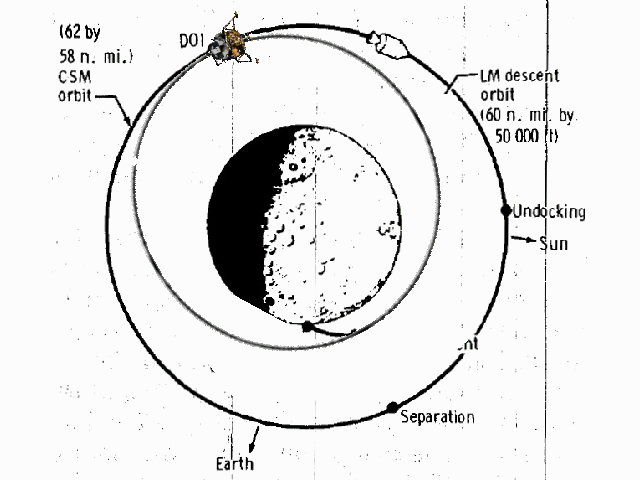
If the lunar module was not using its engine at the other end of the transfer orbit to start the powered descent, it would continue to follow this orbit, and would move again up to the orbit ot the command module, with its speed progressively decreasing again on this second half.
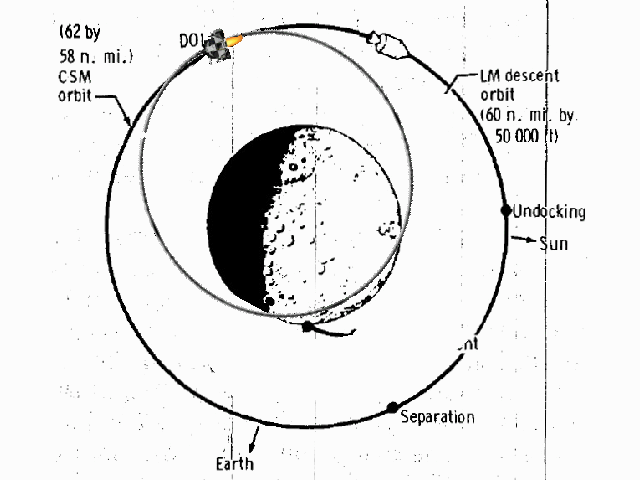
It is the same type of deorbit maneuver which is used to make the ascent module crash on the moon after it has returned to the command module; with the difference that the decrease of speed to make this deorbit maneuver is more important than the decrease of speed which is made to make the lunar module reach a closer orbit in the initial descent, so that, instead of avoiding the lunar surface, it will meet it instead, but it will hit it almost horizontally (with an angle of only 3.7° relatively to the mean lunar surface as specified in the mission report of Apollo 12).
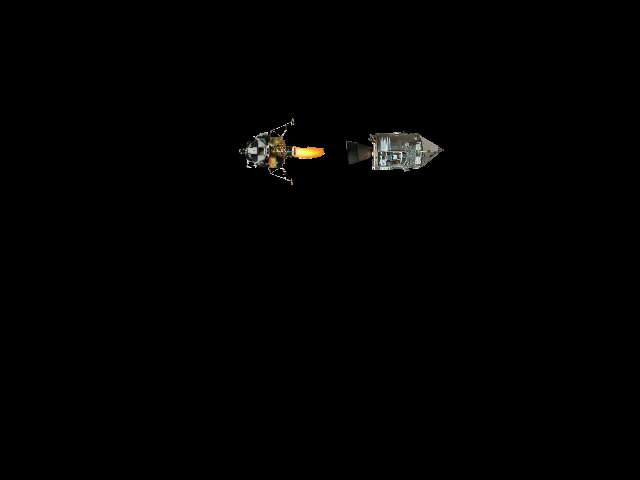
So, to summarize, after having undocked from the command module, the lunar module briefly uses its engine to decrease its speed of the difference between the orbital speed of the command module and the orbital speed of the descent trajectory, and then it starts to glide down on the descent trajectory with its engine off.
It means that the command module should see the lunar module move slower than itself.
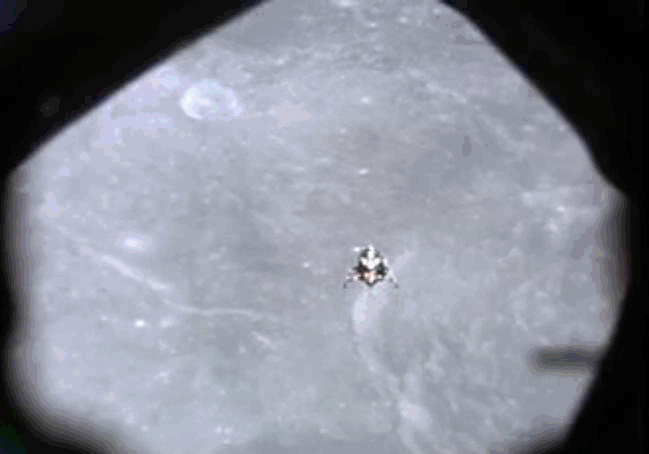
This is a sequence which is shown in the video filmed from the command module in Apollo 12, and which shows the lunar module starting its descent toward the lunar surface.
We can see the lunar surface move down, which means that the camera is filming in the direction of the move of the command module (if it was filming in the converse direction, we would see the lunar surface move up instead).
I have sped up the sequence 10 times, for it better allows to see what is really happening.
Initially, we don't see if the lunar module is moving the same as the command module, or moving ahead of it, or lagging behind, for we have no reference to see how it is moving relatively to the command module.

But, at the end of the sequence, we can see the lunar horizon appear on the top of the video, and progressively move down.
This means that the lunar module is moving faster than the command module, and the pilot of the command module is turning his camera to continue to follow the lunar module.

So, while, in the normal DOI maneuver, the lunar module should reduce it speed, and thus move slower than the command module, it is conversely seen going faster than the command module, which means that there is no way that it can take the descent orbit.
This is the main clue, but not the only one; indeed, the pilot of the command module has to turn the camera to continue following the lunar module (which is evidenced by the fact that the lunar horizon moves down on the video); if the pilot of the command module does not turn the camera, then it means that it is the command module which turns so that the camera of the command module will continue following the lunar module.
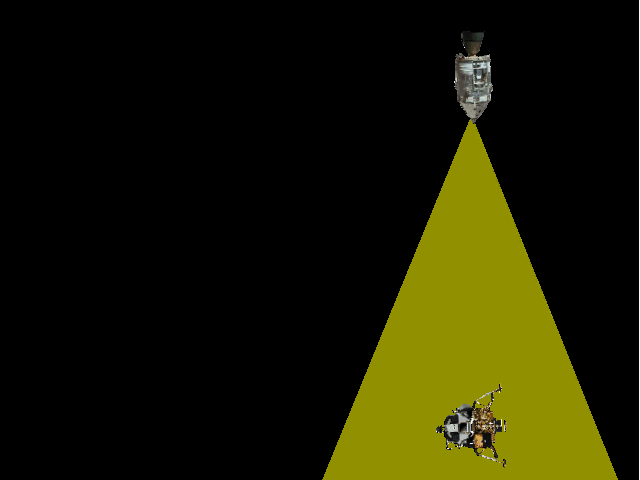
The fact that the CM turns to follow the LM incorrectly moving ahead of it means that its field of view rotates relatively to the LM.
But, if the field of view of the CM rotates relatively to the LM, it also conversely means that the LM rotates relatively to the field of view of the CM.
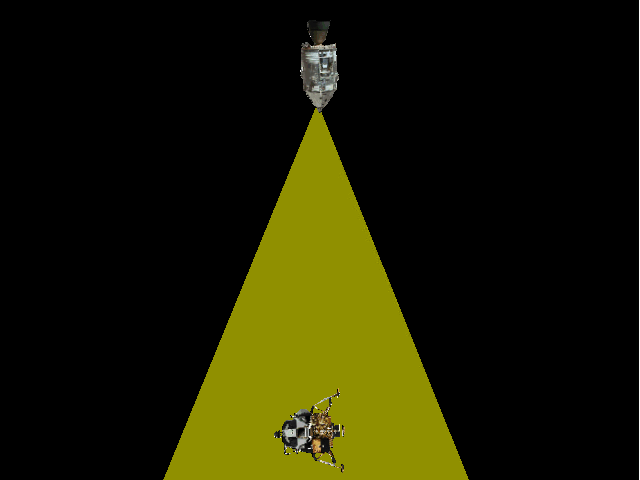
Now, if I make another animation showing how the LM appears in the reference system of the CM (making that the angle of view of the CM has a fixed orientation in this reference system), we can see that the LM appears turning relatively to the angle of view of the CM.

I have used a 3D model of the lunar module, I have found on the net, that it was possible to make turn, and I have built a set of different views of the lunar module under different angles.
I have used this set of views to show how the lunar module would have been seen turning as the camera of the command module is turning to follow the lunar module which is moving ahead of it.
It is not perfectly continuous, but the goal is to show how the angle under which the lunar module is seen from the commande module changes as it is moving ahead of the command module (and its size also decreases as it gets farther from the command module).

So this sequence is doubly incorrect; first, by incorrectly making the DOI maneuver (that is making the lunar module go faster than the command module instead of making it go slower), and second, by showing the lunar module always under the same angle of view (and the same size), while this angle should change with the difference of angle of view under which the lunar module is seen from the command module as the lunar module is moving ahead of the command module.
|











